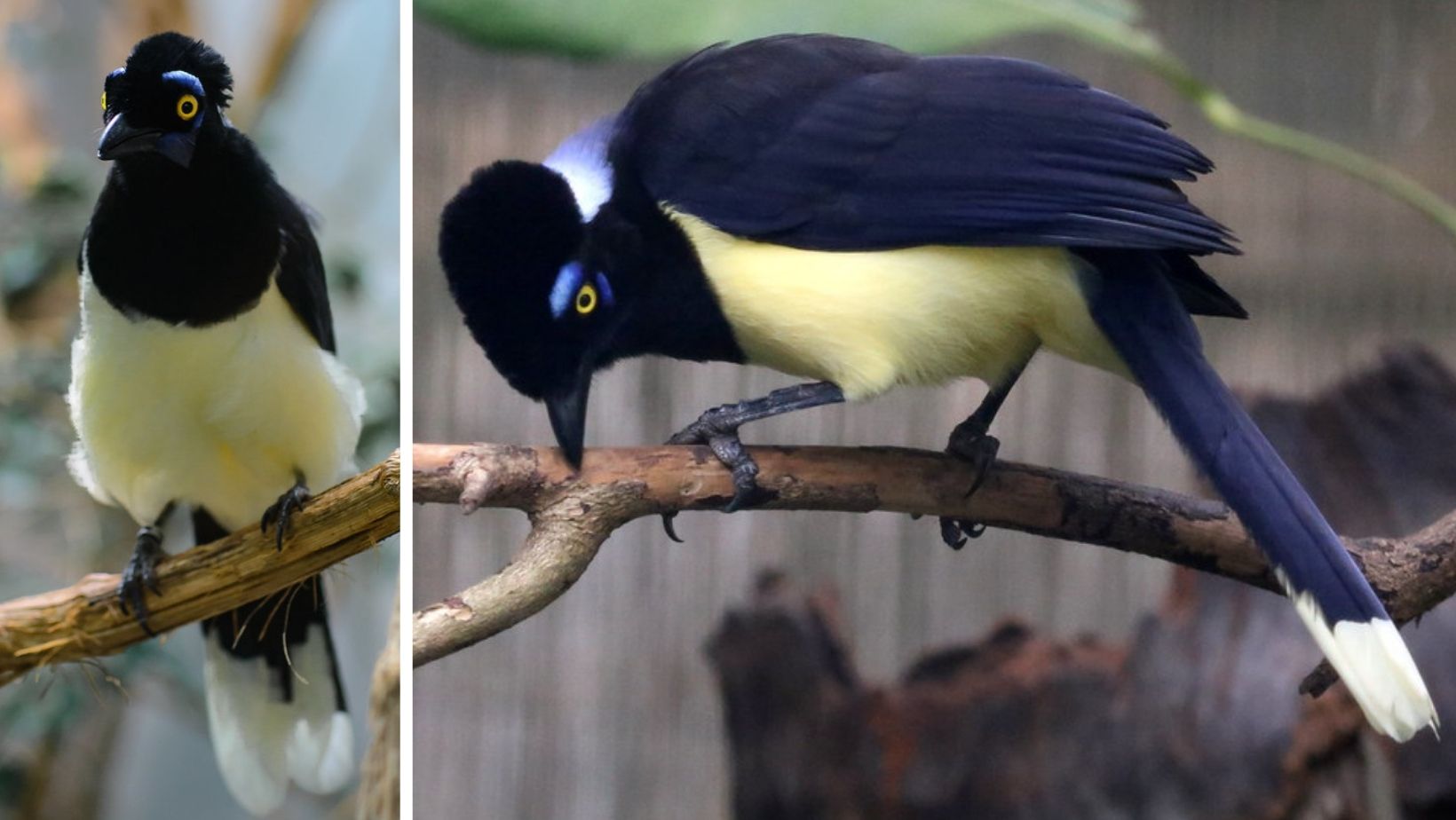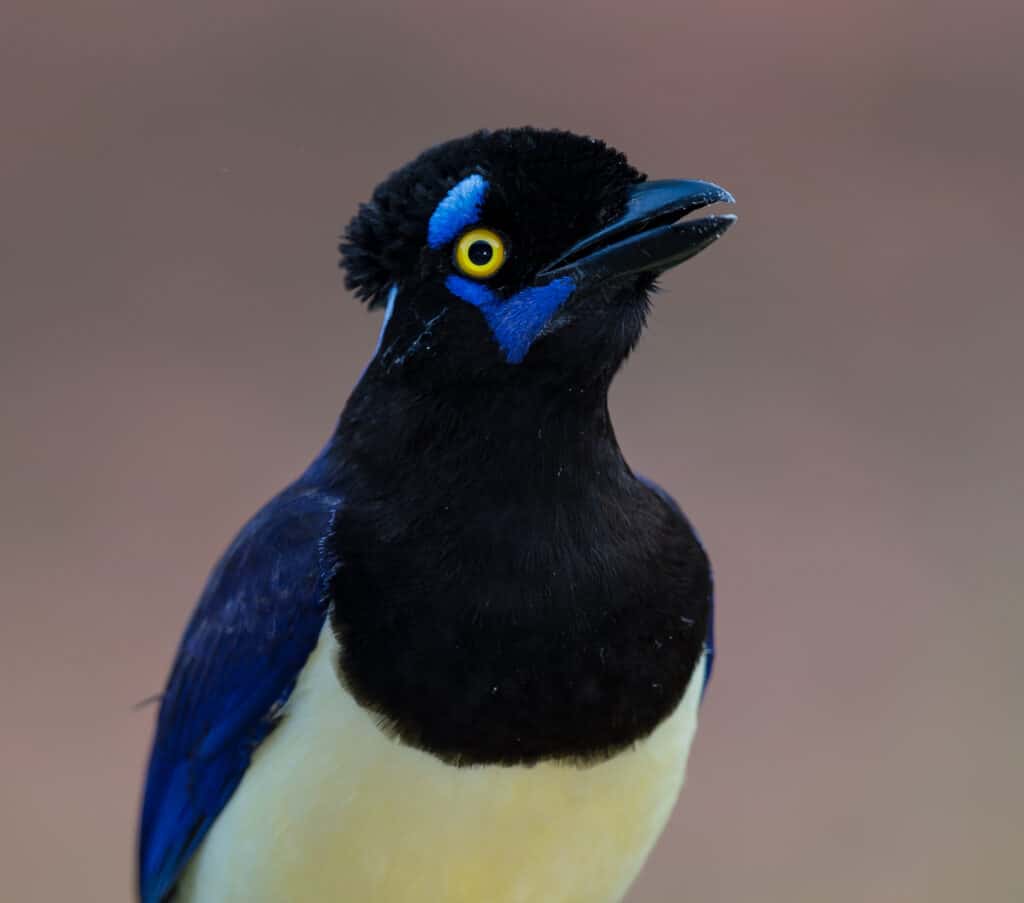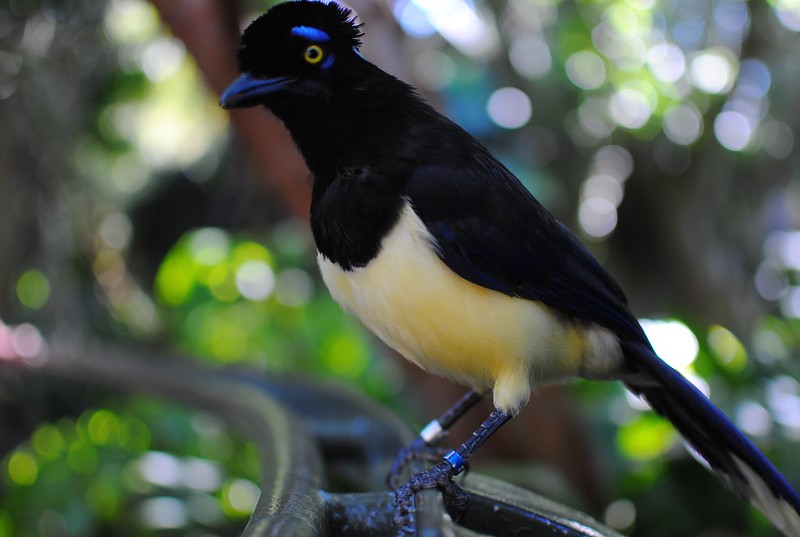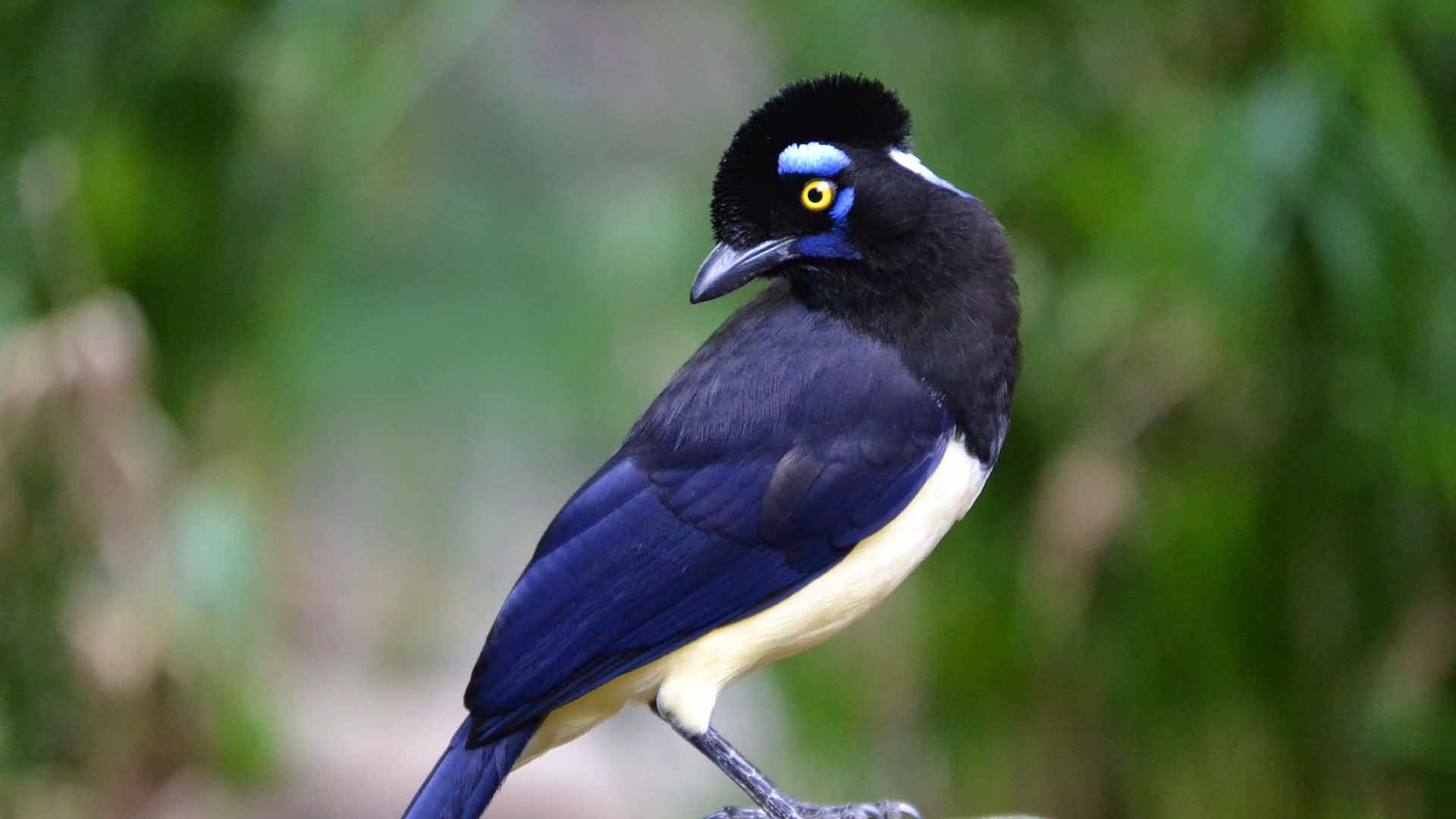

Native to central-southern South America, specifically in countries such as Brazil, Bolivia, Paraguay, Uruguay, and northeastern Argentina, the plush-crested jay graces various forested landscapes, from lowland evergreen forests to temperate rainforests. With a penchant for elevations up to 1500 meters, they have even been spotted as high as 2800 meters in Bolivia.

The plumage of the plush-crested jay is a marvel of color and design. Black underparts, including the chin, throat, neck sides, and breast, contrast beautifully with the creamy-white to pale yellowish underparts. The crowning glory is the velvet-like crest that starts with stiff feathers on the forehead, transitioning to softer feathers on the crown. The head features a luminous ultramarine crescent above the eyes, coupled with a cyan-blue malar stripe forming a distinctive V shape below the eye. The nape and neck exhibit shades of pale and pure ultramarine. Completing the ensemble are the bird’s black bill, yellow eyes, and dark legs and feet.

The plush-crested jay’s diet primarily consists of small invertebrates, particularly insects. Additionally, they consume various fruits from plant species such as Ficus, Phylodendrum, Casearia, Syagros, Psidium, and Rapanea. Their eclectic diet may also include the eggs and nestlings of other bird species, frogs, seeds, and even maize.

Breeding among these birds is a unique affair. Cooperation is sometimes observed, as young birds from the previous season assist with nesting and territorial defense. They construct cup-shaped nests using twigs and line them with smaller twigs and plant fibers, typically positioned 4 to 7 meters above the ground amidst thick foliage. The female is cared for by her mate, and the two to four speckled eggs laid within the nest are incubated for about 18 to 20 days. Chicks fledge after approximately 22 to 24 days of hatching.

While the plush-crested jay faces threats from deforestation, it does display a degree of adaptability, with the ability to inhabit isolated forest patches ranging from 10 to 20 hectares in size, especially if larger forests are nearby. The remarkable beauty and unique characteristics of this bird serve as a reminder of the intricate wonders found within the natural world.



